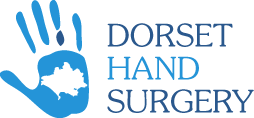Dequervain’s Tenosynovitis
Dequervain’s Tenosynovitis was named after a Swiss surgeon, who first described the condition in 1895. It is an inflammatory condition affecting the two tendons that pass on the thumb side of the wrist to the base of the thumb. These tendons (namely the abductor pollicis longus and the extensor pollicis brevis) run through a narrow tunnel, which prevents them from slipping off the edge of the wrist as it bends and straightens. This tunnel is lined with a lubricating sheath (or synovial lining) which helps to lubricate the tendons to allow for their smooth movement. In patients with Dequervain’s Tenosynovitis, this synovial lining can become inflamed and thickened leading to localised swelling and pain with thumb movements.
Who gets it?
Diagnosis
Treatment options
Treatments for Dequervain's Tenosynovitis are often non surgical. Find out more:
Rest – You may be provided with a splint to rest the wrist and limit the aggravating movements of the tendons through the inflamed sheath.
Anti-inflammatory medication – Either tablets or topical gel can be utilised to help reduce pain and inflammation.
Steroid Injection – Injection into the inflamed sheath can be very effective in relieving symptoms, with 70% of patients deriving benefit. This is often combined with other measures.
Hand Therapy – The Hand Therapist will undertake techniques such as massage, ultrasound and stretching exercises to encourage normal gliding of the tendons.
Surgery
Surgery can be performed under local or general anaesthetic. A small 2 cm incision is made over the affected tendons and the tight sheath is divided to allow free passage of the tendons. The stitches are often dissolvable. A supportive dressing is applied, which aims to allow light hand and finger use. Sometimes a Plaster of Paris will also be applied. The dressings will be removed at 10-14 days and you will then be referred to the Hand Therapist to commence an exercise programme. You may not be able to drive for at least 2 weeks following surgery. Full recovery should occur by three months.

